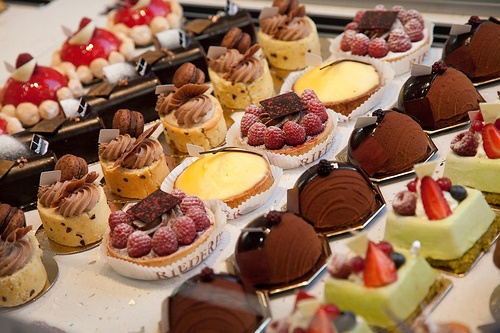It is a great way to show your creativity and to bring happiness to other people. It can be intimidating for those who are new to baking or have some experience but still get inconsistent results. This guide will demystify this process and provide you with all the information needed to make perfect pastries.
Understanding Your Ingredients
1. Flour Power
Pastries are made of flour. Knowing the differences can help choose the best type for your recipe.
- Multi-purpose Flour can be used for many different pastries.
- cake flour is a low-protein product, which results in a softer, finer texture.
- bread flour contains a high level of protein and is ideal for baked goods that are chewy.
2. Flavor is Fat
Pastries are flavored, moistened, and have a good texture and flavor when they contain fats like shortening and butter.
- butter has a delicious flavor with a tender crumb.
- shortening or oil will make your pastries more flaky and moist, respectively.
3. Sweet Science of Sugars
Sugars affect more than just sweetness; they also influence texture, color, and moisture.
- Brown sugar has a richer flavor and more moisture than Granulated Sugar.
- Powdered Sugar can be used for delicate textures and icings.
4. Leavening Agents and Eggs
The eggs can be used to add flavor, richness, and leavening. Baking soda and baking powder are leaveners. They help to make pastries rise. Baking soda requires an acid, like buttermilk to be activated.
It is important to mix up methods
1. Method of Creaming
Butter and sugar are whipped until they become light and fluffy. This adds air to the mixture, resulting in a soft crumb. It is perfect for cakes and cookies.
2. Rubbing Method
For flaky pastries like pie crusts and scones, it is important to rub fat into the flour so that it looks similar to breadcrumbs.
3. Folding Technique
When you fold, it means gently mixing ingredients to keep air in delicate mixes like mousse and sponge cake. Avoid deflating your mixture by using a spatula or a soft hand.
Bake and Cool
1. Preheat Your Oven
For consistent results, always start by preheating the oven. Consider using an oven thermometer for accuracy.
2. Temperature and baking times
Be sure to follow the recipe instructions, but keep in mind that your oven’s size and your dish may require adjustments.
3. The importance of cooling
To prevent sogginess, allow pastries to cool down on a rack. Cooling times can affect texture and flavor development.
Troubleshooting common issues
- Pastries that are tough: Mixing ingredients too much can cause gluten to develop, causing pastries to be hard. Just mix until the ingredients are mixed.
- Uneven baking Rotate the baking tray halfway through to ensure even baking.
- Sagging middles can occur if the oven is opened too soon or if it’s underbaked. Make sure your pastry has been fully baked before removing it.
Last Thoughts
Baking can be a combination of science and art. You can achieve the perfect pastry by understanding and using these basic tips. Every baker will have some failures; these are just the stepping stones on your path to success. Happy baking!
















Got a Questions?
Find us on Socials or Contact us and we’ll get back to you as soon as possible.